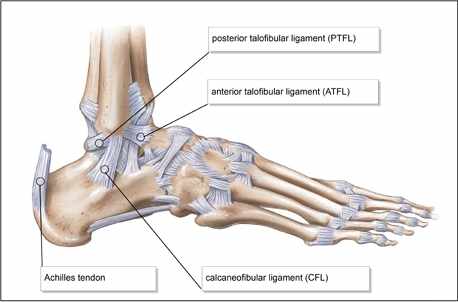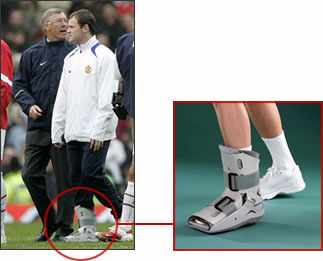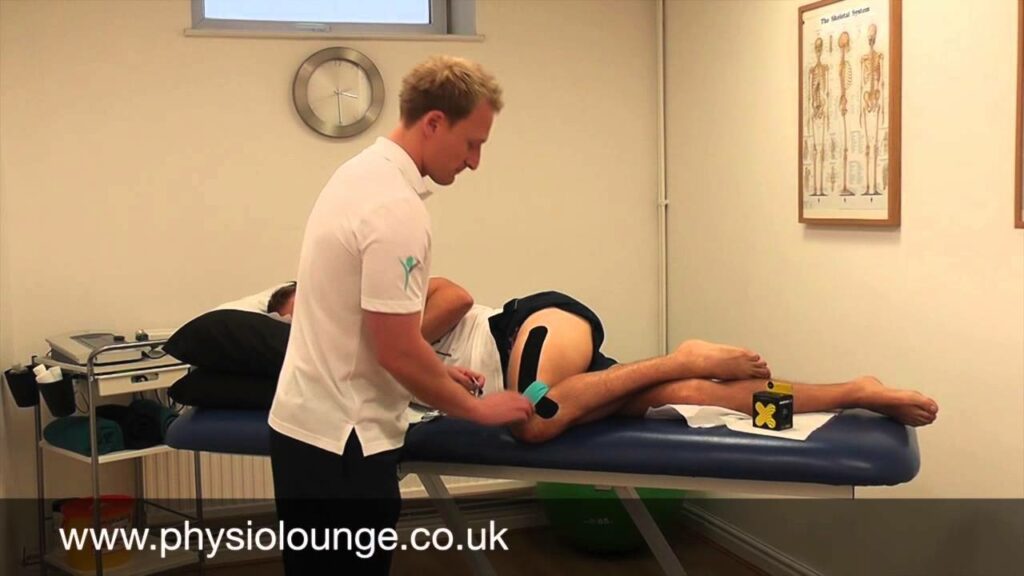Lets face it… most of us have been there, whether its rolling your ankle playing 5-aside, tripping off the curb, a few too many in high heels, or even just falling over the dog, ankle sprains are fairly common and very painful!
What is an ankle sprain?
For the purpose of this blog we’ll focus on the most common type of ankle sprain, the Lateral ankle sprain. This happens when your foot turns ‘inwards’ under your ankle or ‘Inverts’. This action causes a great deal of force to be applied to the ligaments stabilising the area, the anterior talofibular ligament (ATFL), calcaneofibular ligament (CFL), the Posterior talofibular ligament (PTFL), the peroneal muscle tendons and the facia/ retinaculum that holds everything in place.

Types of Ankle injury
As Physio’s we tend to categorise these injuries into three grades depending on their severity;
- Grade 1 – mild sprain
- Grade 2 – moderate sprain
- Grade 3 – larger/severe sprain or rupture
To scan or not to scan?
Generally speaking, unless it is a severe ankle sprain (and we’ll pick up on that straight away). Scans are rarely necessary after an ankle sprain. The main reason for an X-ray following a bad injury is to rule out a possible fracture, however this is only needed if you fit the following criteria set out by the ‘Ottawa ankle Rules’, this will be assessed by your Physiotherapist so it is vital to get an assessment ASAP after injury.

Do I need crutches?
In some cases after an ankle sprain crutches might be advised by your Physio to aid with walking while pain levels are high. For more serious injuries it might be advised for you to wear a boot, the purpose of this is to immobilise the joint and allow the healing process to begin without re-aggravation from excess movement or forces from walking.

Early Stage Rehab
- Active ROM drills (Range of Motion)
The amount you can move your ankle will depend on the severity of the injury, Pain free movements are best in the initial stage of recovery little and often throughout the day.
- Isometric Strengthening drills
These drills allow the muscles to maintain strength and control while you recover, they are also proven to decrease pain levels. We would advise starting low with 5 second holds for no more than 5 repetitions at a time.
- Through Range Strengthening
In less severe injuries we may be able to push the ankle further earlier on in the rehab process. The main indication for moving onto these drills are minimal to no swelling, pain levels below 4/10 with end range movement and a normal walking Gait.
- Balance Drills
Due to the ‘Neural inhibition’ caused by the inflammation at the region, we can quickly lose the ability to balance on the joint. Therefore, it is imperative to regain this quickly to prevent re-injury and to aid with further exercise progressions.
Wrap Up
Ankle sprains are unfortunately a common occurrence but early effective intervention can allow for a speedy and safe return to activity. Not to mention the significantly reduced risk of future injuries.



